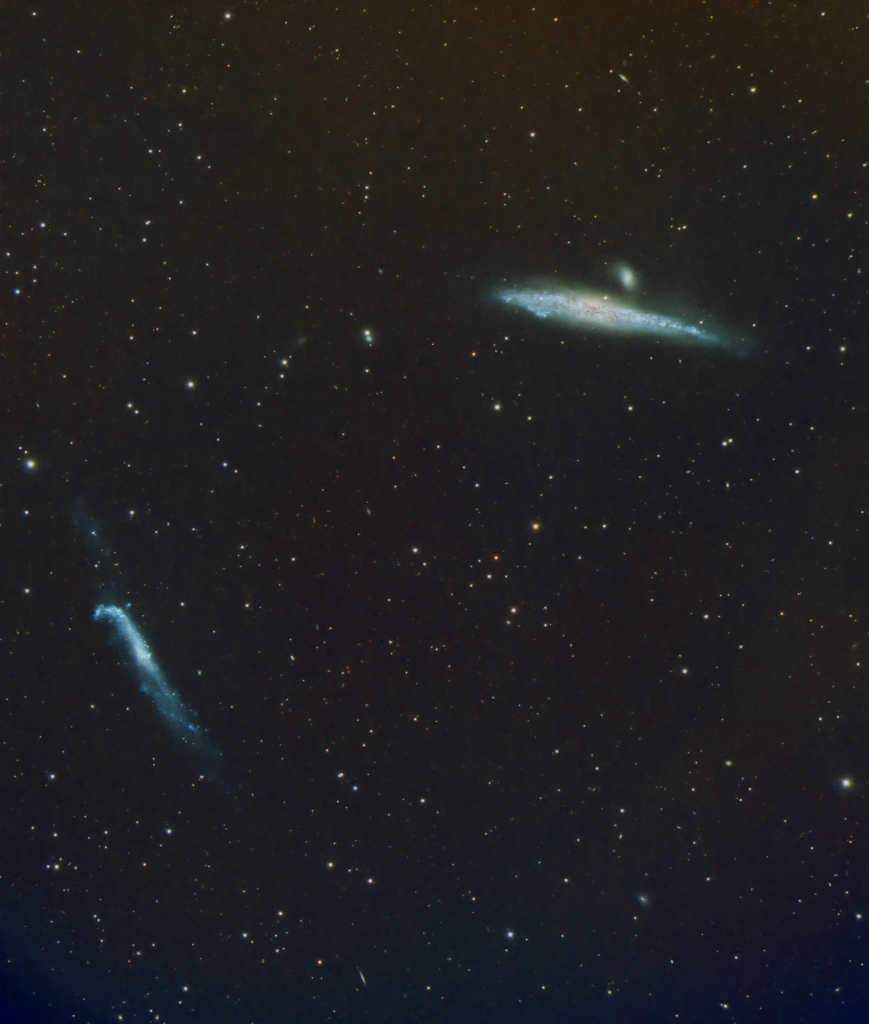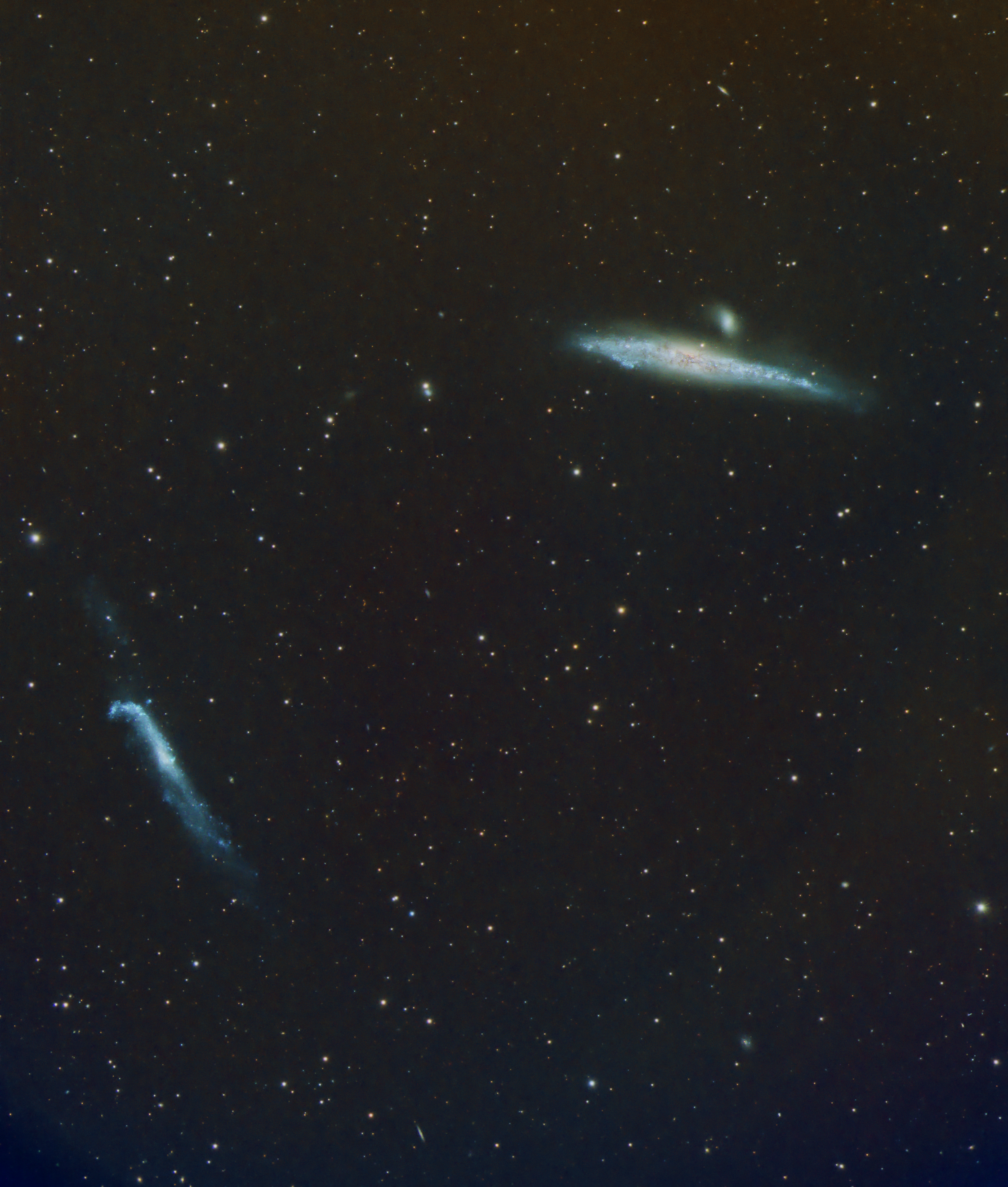
Similar Posts
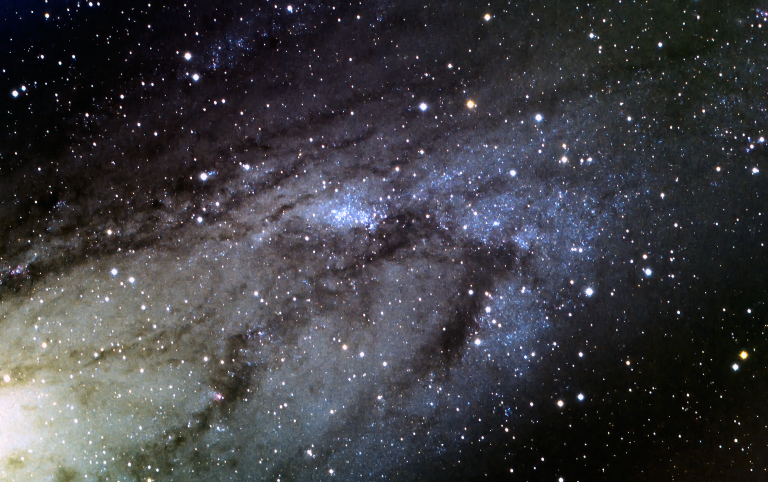
A Star Cloud in Another Galaxy
NGC206 is an unusual object. It’s a cluster of stars, which in itself is not unusual at all… but it’s in ANOTHER GALAXY. The Andromeda Galaxy, to be precise. The fact that we can see it so clearly, two and a half million light-years away, boggles the mind. It’s that cluster of blue stars near…

Another look at the “green comet”
I don’t know why the press has latched onto the name “the green comet” for C/2022 E3 (ZTF) – most comets are green, and it’s too dim to see any color at all if you’re viewing it through binoculars or a telescope. But through 2 hours of total exposure time, the colors do emerge, and…
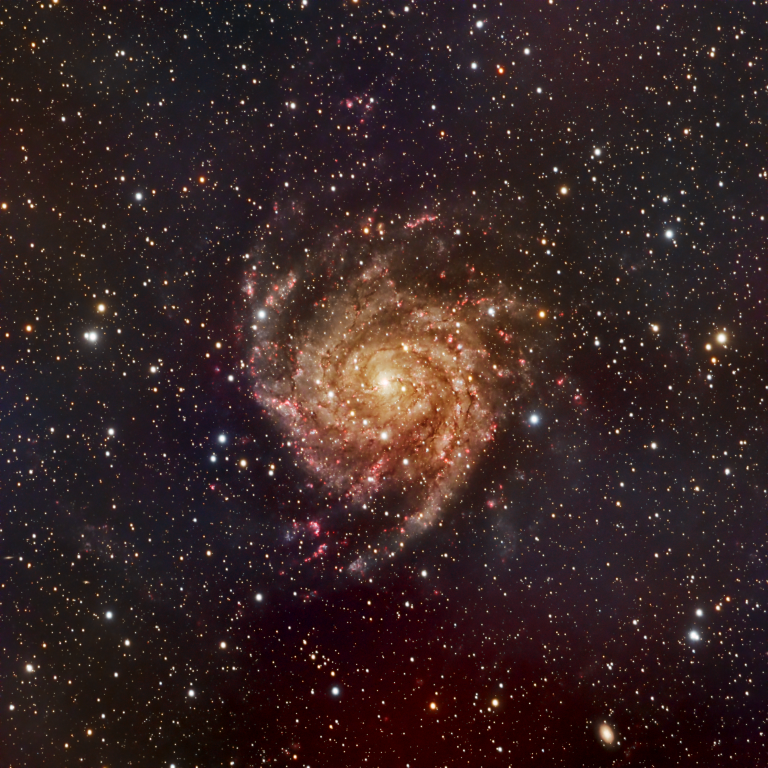
The Hidden Galaxy
This is IC342, located about 10 million light-years away. If it were anywhere else in the sky, it would be visible to the naked eye – but it lies behind the disk of our Milky Way galaxy, obscuring the view. This image is the result of 22 hours of total exposure time to try and…
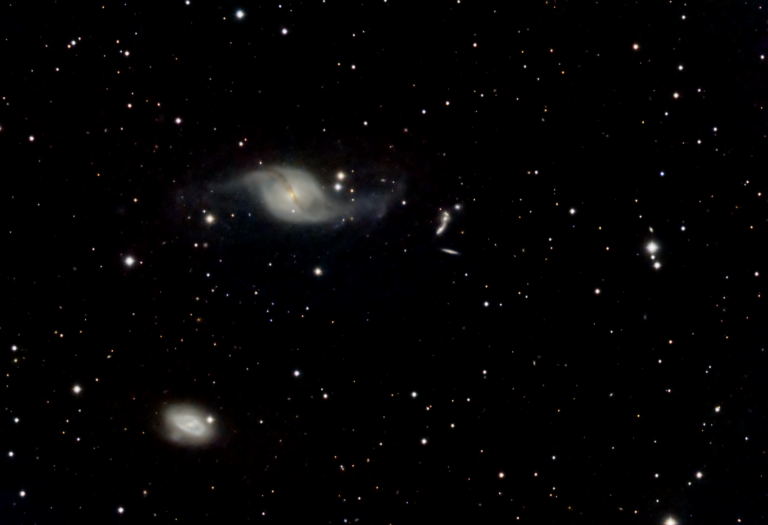
A really messed-up galaxy.
That twisted-up galaxy at the top is NGC 3718. We don’t actually know if it’s a spiral or a lenticular galaxy, because the galaxy below it, NGC 3729, appears to have warped it beyond recognition when it passed by it. Also look for the cluster of five more distant galaxies just to the right of…
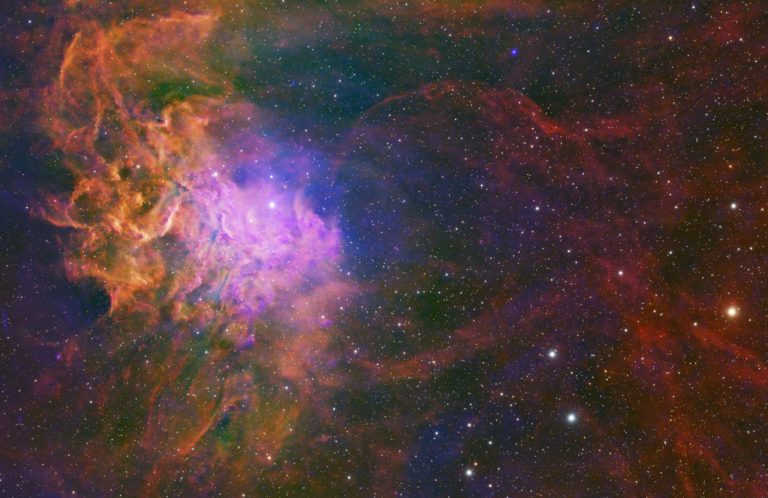
The Flaming Star Nebula
Kind of an interesting framing on this one – it looks like it’s reaching out! This is narrowband emissions, in the Hubble Sulphur/Hydrogen/Oxygen palette. Some say there’s no Oxygen emission in this one, but with enough determination I pulled it out – that’s what results in the purples and blues you see here.
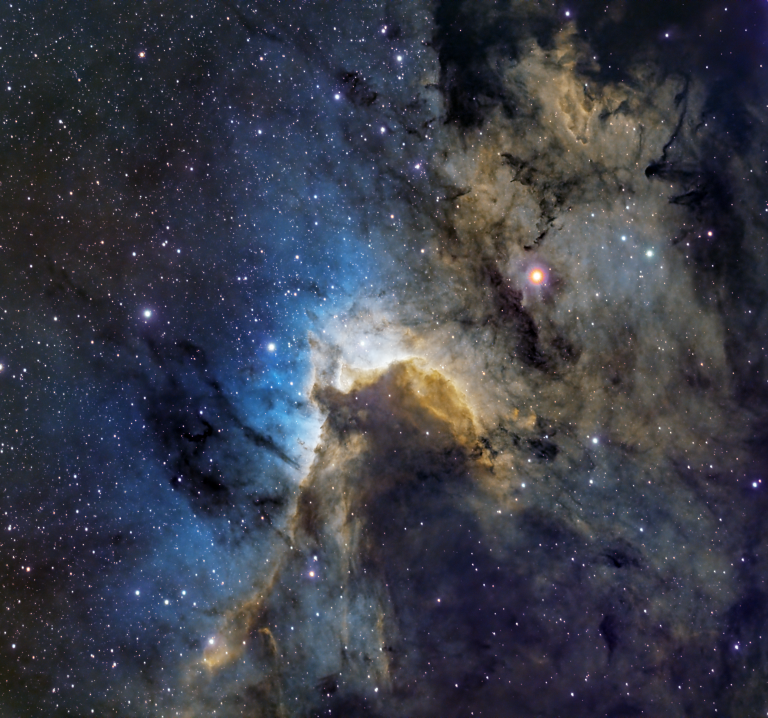
The Cave Nebula
Formally SH2-155, the Cave Nebula lies about 2,400 light-years away within the constellation Cepheus. It’s part of a much larger region of gas and dust (called a molecular cloud). This region is mostly ionized Hydrogen, but there’s just enough Oxygen – blue in this image – to make for a pretty picture. Capturing that Oxygen…

